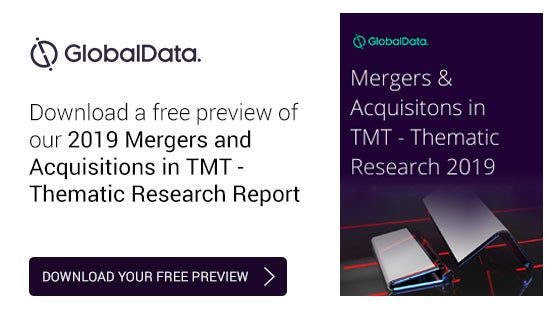IFPL IFE and Passenger Entertainment Systems

IFPL specialises in product design and engineering solutions to the passenger entertainment industry.
We manufacture our own products and are suppliers to ALL of the major Inflight Entertainment (IFE) systems suppliers, as well as the leading airlines in the world.
PASSENGER INFLIGHT ENTERTAINMENT PRODUCTS
Our skills in product design, coupled with our knowledge of the cabin environment, allow us to design and develop passenger products that are reliable and easy to use.
We have helped major IFE companies with the whole development process from initial concepts, through to qualification testing and certification, and then on to final aircraft installation for the following products:
- Passenger handsets
- Passenger controllers (PCU)
- Video deployment arms
- Multimedia docking stations
- Audio jacks
- Dataports and multiport connectors
By adopting our design philosophy, you will find that your products will mature at a much quicker rate, and will have fewer problems along the way.
AUDIO JACK PRODUCTS – MAXIMUM RELIABILITY – MINIMUM MAINTENANCE
The ‘Rapid Fit Jack’ is unique to IFPL. Imagine being able to replace an audio jack in just a few seconds during an aircraft turnaround period – with this unit you can. A compatibility chart of headsets and audio jacks is available on our website.
The jack is made in two parts, and includes a clever slot-in cassette which holds the actual connector part. When the jack fails, it’s simply a case of undoing a single screw, pulling out the cassette, and replacing with a new one. There’s no need to dismantle the seat arm, and no need to disturb the seat cable-harness. The whole process can be undertaken in less than a minute.
The benefits are obvious. Not only is the replaceable part much cheaper than a complete audio jack module, but the cost savings potential is huge. The benefits to seat availability are also obvious. A jack can be reported as broken on an outbound flight, and can potentially be fixed in time for the return leg!
Our ‘fit and forget’ Long Life Audio Jacks have been tested to over 100,000 insertions – for reliability nothing else comes close. This patented audio jack not only has a robust design, but also has a feature that allows broken headset tips to be pushed through the jack to the housing.
INCAM -INTEGRATED NOISE CANCELLING JACK MODULE
‘INCAM’, our ‘Integrated Noise Cancelling Jack Module’ provides the latest low cost solution for audio noise cancellation. All of the electronics are housed within the jack module in the seat. This means that all you require in the headset are the speakers and microphones, which results in a far cheaper headset with the same performance.
INCAM is available in two and three pin versions, with or without the rapid fit feature. A further benefit of INCAM is its compatibility with most types of non-noise cancelling headsets. This feature gives airlines the option to offer low cost noise cancellation throughout the whole cabin.
INCAM is now a standard offering on the latest Thales and Rockwell IFE systems, and is currently being installed by several airlines, including British airways, Etihad, and Delta.
DUAL-PURPOSE AUDIO MODULE
The dual-purpose audio module is the latest development from IFPL. The dual purpose module is configured to accept dual pin headsets and single pin headsets. This is a major benefit to airlines who operate mixed fleets, because they no longer need to worry about matching specific headset types to specific aircraft. Another great benefit is that passengers can use their own carry-on headsets with the audio module, without the need for an adapter plug.
MULTI MEDIA DOCKING STATIONS
IFPL has developed docking stations designed to be compatible with all MP4, MP3, iPod, Zunes and DVD palyers, while incorporating USB and audio output jacks as standard. IFPL has registered on the ‘Made for iPod ‘ programme.
We know that airlines need the highest level of technical and project management support. IFPL can offer this service to you. We have worked with most of the world’s major seat suppliers, and having designed and developed the IFE equipment, we know what it takes to get it right – on both sides.
We have a worldwide distribution network, including AAXICO, Inc., of Miami, USA. IFPL holds EASA 21 (G)approval. EASA approval also means we can supply our products direct to customers with European-registered aircraft.
Products and Services
Video
White Papers
Related Projects
Press Release
IFPL is excited to announce the launch of the contactless retail system (CRS).
Read moreNear Field Communication (NFC) is just one of four fantastic products IFPL are exhibiting on stand 6A42 at the Aircraft Interiors Show 2012, in Hamburg, Germany. Prepare for the future and see our connectivity now.
Read moreIFPL will shortly be showcasing the latest addition to its audio jack family. The jack has IFPL's low cost noise cancellation jack (INCAM™) and a USB port, and is aimed at economy and premium seat passengers. With the increase of carry-on personal electronic devices comes the need to rechar
Read moreUK based IFE specialist IFPL (Inflight Peripherals Limited) is celebrating a tremendous achievement after being awarded the Queen's Award for Enterprise: International Trade: 2008, which was announced on 21st April, the Queen's Birthday. Each year The Queen's Awards are presented in t
Read moreThales has selected INCAM, the noise-cancelling audio jack designed and manufactured by Inflight Peripherals (IFPL), as a standard offering for the TopSeries IFE system. It is being supplied to most of their A380 and B787 customers. The INCAM reduces unwanted cabin-noise by creating 'an
Read moreInflight Peripherals (IFPL), a company based on the Isle of Wight, the UK, has been granted EASA Production Organisation Approval (POA). This allows IFPL products to be supplied direct to customers with European-registered aircraft. EASA approval compliments the company's ability to su
Read moreRegional Offices
Elm Lane
Calbourne
Newport
Isle of White
PO30 4JY
Other
United Kingdom














